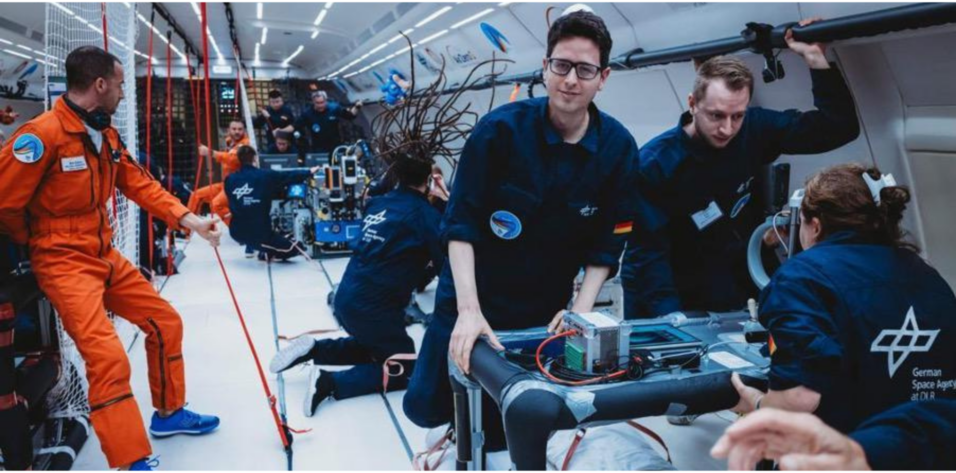

Among astronauts, dry eye disease (DED) symptoms, including ocular irritation, eye strain, and blurred vision, are prevalent. About 30% of astronauts report experiencing DED symptoms during long-term space missions.1 A research team led by one of us (T.A.), in collaboration with the German Aerospace Center (DLR), is the first to focus on DED in space by using parabolic flights as a stepping stone to on-orbit research. These special flights create microgravity to conduct experiments using a finely tuned parabolic flight trajectory (Figures 1 and 2).

Figure 1. Dr. Ax (center) instructing examiners and recording eye data in microgravity.

Figure 2. Dr. March (center) recording eye data in microgravity.
Figures courtesy of Novespace and DLR
FACTORS CONTRIBUTING TO DED IN SPACE
The zero-gravity environment and prolonged exposure to a closed, dry cabin environment contribute to DED. The pathophysiology likely involves multiple factors, such as tear film instability, meibomian gland dysfunction, and ocular surface inflammation. Altered gravitational forces and fluid distribution challenge the tear film’s ability to maintain stability and spread. Additionally, exposure to dust, artificial lighting, and digital screens contributes to ocular surface damage. Finally, a fluid shift causes eyelids to swell and likely alters tear drainage, potentially causing tear retention and an accumulation of irritants.
DED RESEARCH IN MICROGRAVITY
Studying DED in microgravity can provide insight into patients’ ocular health on Earth and the mechanisms underlying the disease. This research can also promote the development of innovative diagnostic and therapeutic options. For example, infrared imaging could be incorporated into noninvasive, portable devices for assessing the tear film in vivo. Therapeutic options such as ocular neurostimulation devices show promise for inducing lacrimation and alleviating DED at the press of a button. These advances have implications for improving eye care on Earth, particularly in remote or resource-limited settings.
THE ROLE OF INTERDISCIPLINARY COLLABORATION
Collaboration among aerospace medicine doctors, ophthalmologists, and engineers is essential for advancing physicians’ understanding of DED and developing effective interventions. Future research campaigns will focus on DED and other eye conditions.
1. Ax T, Ganse B, Fries FN, et al. Dry eye disease in astronauts: a narrative review. Front Physiol. 2023;14:1281327.




